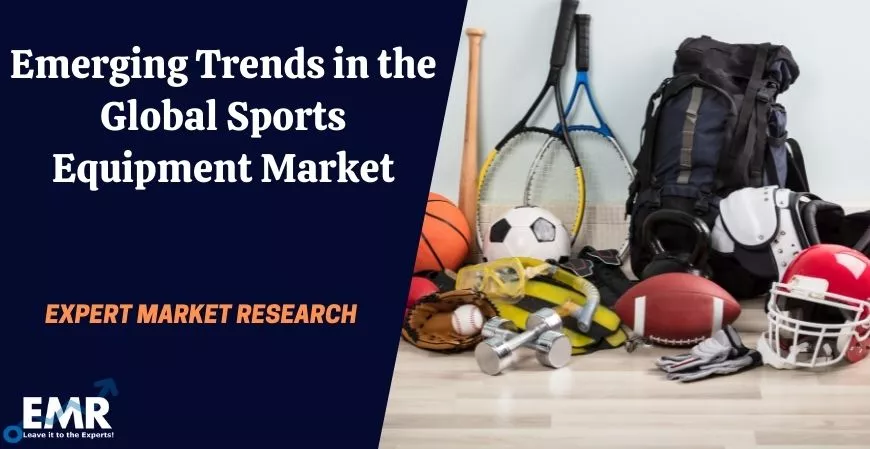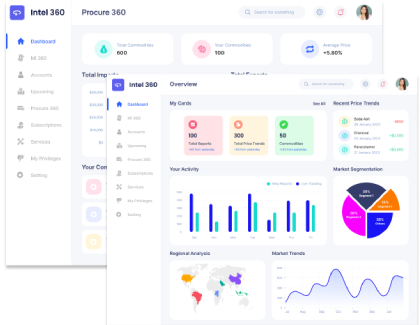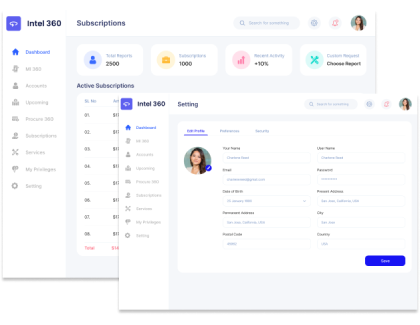Over the last few years, the global sports equipment market has grown significantly. Growing consumer awareness about the importance of health and fitness and the emergence of e-commerce are some of the key drivers driving the growth of the global sports equipment market. Sports equipment for ball sports, adventure sports, fitness, golf, winter sports, and other sports equipment, such as archery, billiards, bowling, wheel sports, pogo sticks, and indoor games, are available on the market. Ball sports have the largest market share among the various sports equipment segments.
Increased media coverage of global sporting events such as the Olympic games, Commonwealth games, and FIFA world cup encourages young people to participate in sports. To keep up with rapidly changing global trends, the sports equipment industry is quickly adopting new technologies and adapting its products. Product improvement through R&D activities and an emergence of e-commerce is expected to propel the growth of the sports equipment market in the near future.
Read more about this report - REQUEST FREE SAMPLE COPY IN PDF
The use of high-quality protective equipment is one of the significant measures to prevent accidental sports injuries, which is expected to aid market growth. Further to that, the rising popularity of online shopping platforms and rising disposable income, particularly in emerging economies, are expected to provide additional growth opportunities for the sports equipment industry.
Rising health and fitness awareness among the consumers is also one of the market's primary growth drivers. Constant advancements in the materials used in the manufacture of sports equipment are assisting in improving product performance and, as a result, increasing the rate of adoption. Consumers, for example, are increasingly demanding equipment that can provide them with relevant insights into performance as sensor technologies advance. Sensor technology has reached the point where it can be integrated into a wide range of sports equipment, including tennis rackets, golf clubs, fishing rods, and swimming goggles. These sensors are capable of measuring motion and recording detailed biometric data, which can be analysed to determine problems caused by an athlete's swing, cast, or stroke. Sensors attached to this equipment can detect changes in the wearer’s body, collect the data, transfer this to remote or connected device, and facilitate analysis of the user’s performance during a sports activity.
One of the recent industry trends is the combination of casual and athletic designs for the development of sports equipment, which is expected to provide a significant boost to the market's growth. Increasing urbanisation, rising living standards, and rising disposable income are translating into a greater preference for sports to maintain a healthy lifestyle.
ASICS, a Japanese sports equipment manufacturer, has recently launched a new line of environmentally friendly sustainable footwear. The growing trend of sustainability has now entered the sports equipment industry as well, and ASICS's move is a step further in this race to gain momentum and leave the competition behind. Recycled materials are being used to create new products.
Young working-class people are leading sedentary lifestyles, making them more vulnerable to a variety of lifestyle diseases. They are participating in sports to stay fit, which is expected to propel the market growth over the forecast period.
JD Sports Group acquired Deporvillage in 2021, an online-only retailer of outdoor sporting equipment. Deporvillage, based in Spain, also specialises in running and cycling equipment. The firm operates through various country-specific websites in Italy, Germany, Portugal, France, and the United Kingdom. JD Group acquired 80% of the company and 20% will be retained by Deporvillage founders Xavier Pladellorens and Ángel Corcuera.
Technological developments in ergonomic equipment, clothing fabric, and wearable tech are some of the most important trends people have witnessed in the last ten years. Some of the key trends for 2021 involve customers combining smart devices and training-specific equipment.
More specific fitness clothes like athleisure call for fitness brands to up their game and in 2021 athletic clothes are becoming reactive. Reactive clothing includes thermal fabrics and moisture-wicking materials that react to fluctuations in body temperature. As a case in point, moisture wicking fabrics detect when the body becomes warm and damp and rather than absorbing the perspiration, it reacts accordingly and drives it outward to evaporate. Reactive fabric producers utilise these materials in a varied array of athletic clothes from socks to shirts to hijabs. This specialised training clothing makes it simpler to live an energetic lifestyle in any temperature.




















Share